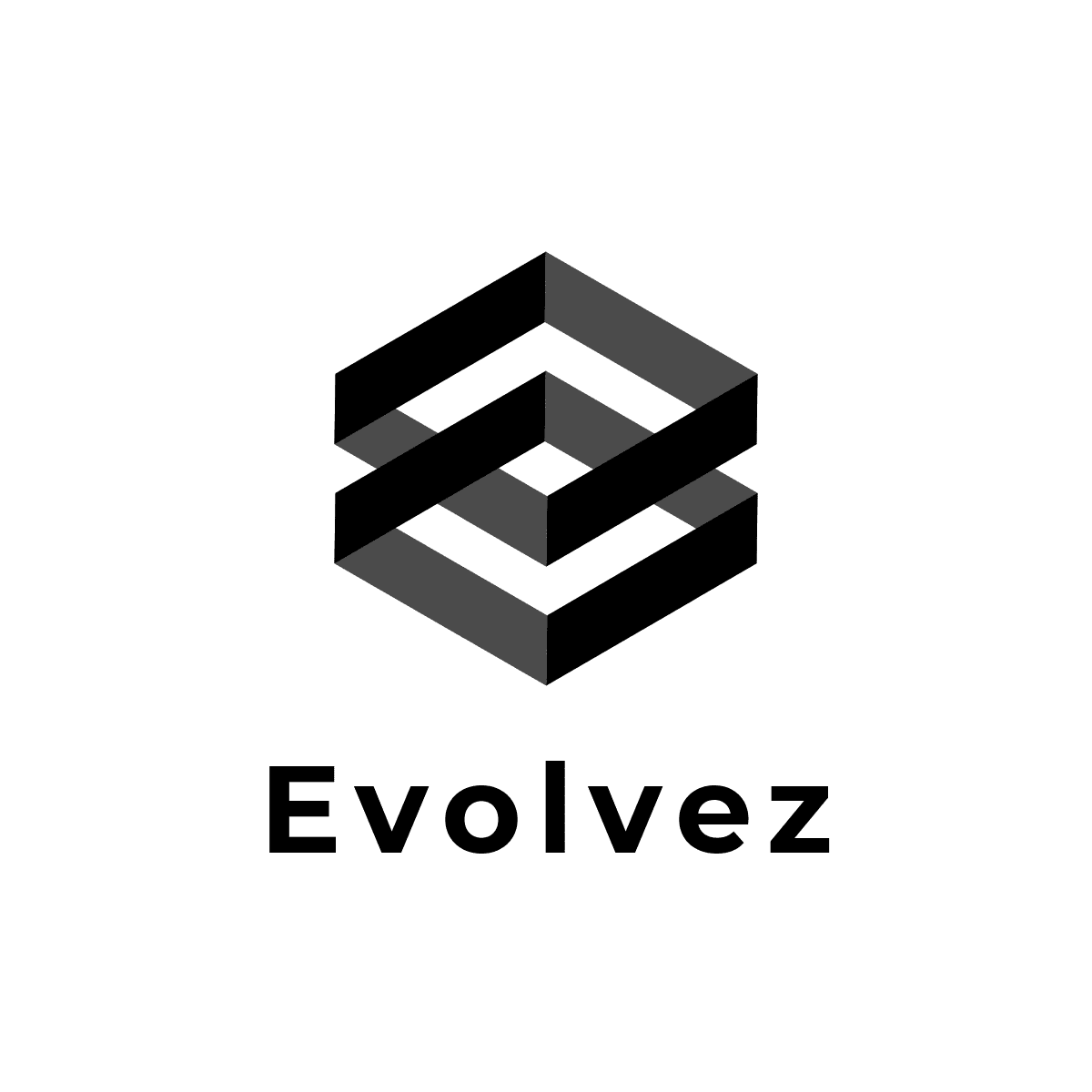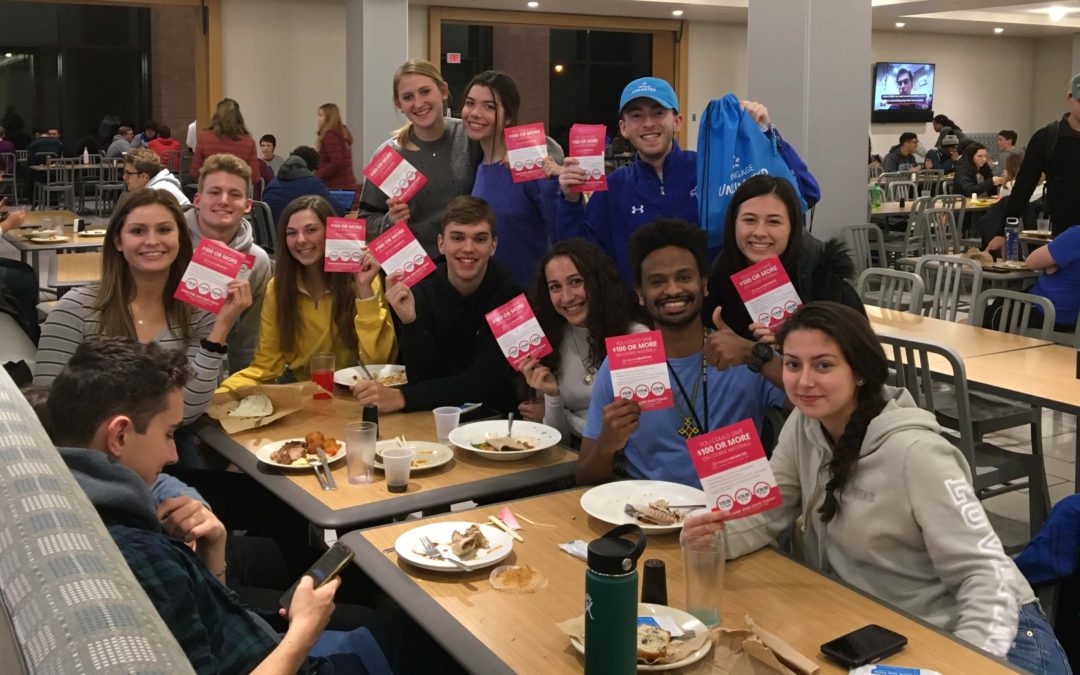Who is Gen Z
Gen Z (those born between 1997-2012) is a unique generation with traits, preferences, and spending habits unlike previous counterparts. As of 2020, they compose 40% of all consumers (Marketing to Gen Z) and have a total spending power of $143 billion, despite only representing 26% of the US population.
Their purchasing decisions are more complex than what marketers may be used to. For one, 87% of Gen Z reports that keeping their personal information private is more important to them than popularity and likes (SheerID). They prefer to be independent in their decisions, instead of relying on celebrity endorsements or strong brand loyalty. They react well when a company makes them feel unique. They enjoy associating with the companies that provide the most utility to them, rather than the flashy choice, since saving money is important to them (UniDays – Who is Gen Z). They also are the most ethnically diverse generation, and place a special emphasis on family and corporate values.
As a result, marketing strategies must be refined and even reinvented in order to stay effective with this generation of buyers. Some of the most successful companies are actively utilizing a Brand Ambassador program to reach this audience. A Brand Ambassador is someone employed by the company to serve as a direct marketing representative. Such initiatives succeed because Brand Ambassadors are able to use their network and personal affinity to reach audiences that conventional marketing methods of marketing are unable to. They are able to leverage Gen Z’s preference for friend recommendations, skepticism of celebrity ads, and concerns for online privacy. Furthermore, since the Ambassadors hired are usually Gen Z themselves, they can explain the company, its products/services, and values in a more organic manner.
Before diving more into Brand Ambassador programs and why they work, it is crucial to first discuss the Gen Z customer lifecycle.
Gen Z Customer Lifecycle
The Gen Z Customer Lifecycle, as shown below, depicts the purchase journey of a typical Gen Z customer. Companies cannot develop a good strategy for Gen Z if they do not understand this journey and what makes it unique compared to those of previous generations. These principles were developed internally by Evolvez, over the course of several years of running Gen Z campaigns on behalf of companies like Dollar Shave Club, the Economist, Panera, etc.
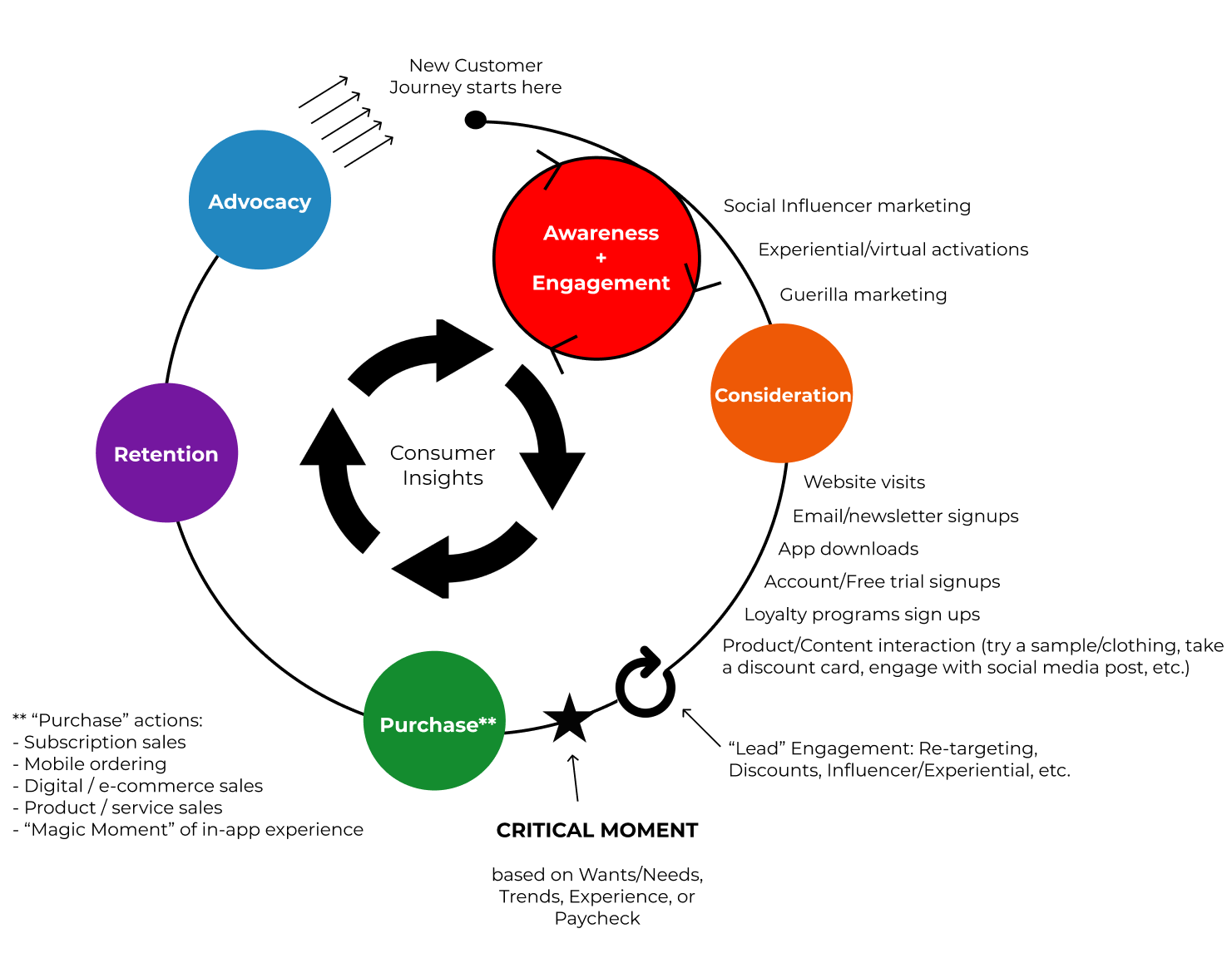
Awareness + Engagement
Within a typical customer lifecycle journey, awareness and engagement are two separate stages. This is not the case for Gen Z. Gen Z is plugged in at all times, whether it be on digital or social channels. Their tendencies to be super connected to their peers and the outside world allow for mass communication unlike any other time in history. Due to this relative availability and perceived ease of access, marketers tend to bombard them with advertisements. As a result, Gen Z as a whole tends to do a good job “tuning” out most of the messaging presented to them. In fact, according to a recent study, as much as 69% of Gen Z Americans block ads online (Kanter Millward Brown ADReaction).
For marketing messages to actually be effective, campaigns aimed at generating awareness are also engaging in nature. The message needs to have an additional element – something surprising, relatable, funny, personal. Something that makes the audience feel like a friend is speaking to them, instead of just another company pushing their agenda.The marketing message might even have nothing to do with the company – this is fine, even making it known that the company gets them is a big step in the right direction. If done properly, their instincts will kick in and they will tune out the information overload and listen to the company’s message.
A few strategies that successfully combine awareness and engagement are displayed on the journey diagram below. Social influencer marketing is obvious since Gen Z spends so much time online, but the message needs to be personal and reflect an understanding of what they want to interact with. Gen Z also cherishes in-person contact, so adopting more experiential and guerilla marketing strategies is a good idea. Specific examples include conducting tabling events, running giveaways, handing out flyers, hosting classroom and organization presentations, etc. on college campuses – a hub filled with Gen Z individuals. A common theme among all of these strategies is that it allows for an authentic conversation. These are not one-sided affairs where the company is simply speaking to the audience – they allow a way for the potential customer to respond back. This is what it means to combine awareness and engagement.
The final thing to understand is that a Gen Z customer is unlikely to convert after the first few touchpoints with the company. Sure there will be a few that immediately jump into the next “consideration” stage, but it’s more likely the company needs to engage with the potential customer a few more times – as depicted by the arrows surrounding the Awareness + Engagement stage in the diagram. In fact, the Rule of Seven states that companies must engage with a customer at least seven times in order to achieve noticeable results. With Gen Z, due to the information overload, professionals recommend that it is more like the Rule of Ten (HerCampus).
If enough authentic touchpoints are made with the potential customer, an interest will spark with the company capturing a piece of the potential customer’s mind. This allows the potential customer to transition into the next stage of the journey – consideration.
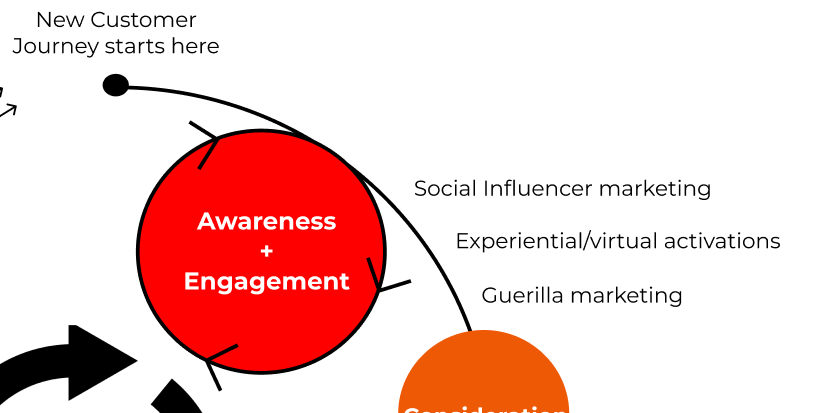
Consideration
The consideration stage involves potential customers who have made the decision to further look into the company and/or test the company’s product/service. The nature of how this interest is expressed by the customer comes in various forms depending on the nature of the business (website visit, newsletter signup, etc.) as depicted in the diagram below. This is a major step for any company who wants to service the Gen Z market.
Usually at this stage, the potential customer provides the company something valuable in return for the opportunity to test or learn more about the company. Whether it be their email, phone number, website visit data, social media follow, newsletter signup, etc, it is an invitation for the company to further engage with them. Companies must utilize re-engagement tactics like email marketing, social media promotion, customer support, and additional experiential activations to keep in touch with the potential customer. Remember, the individual is actively testing the company, so it is imperative for the company to answer any questions the potential customer might have and incentivize with additional discounts or limited time offers.
However, given that it’s crucial to engage with these new “leads”, companies have a delicate line to tow in ensuring that the prospective customer does not feel suffocated by information. Companies must respect their space and only share information that is necessary or engaging. It is important to connect, but not bombard. Usually, it takes experience and customer insights to strike the right balance between too much and too little, but just being aware of this is a big first step in formulating the right strategy.
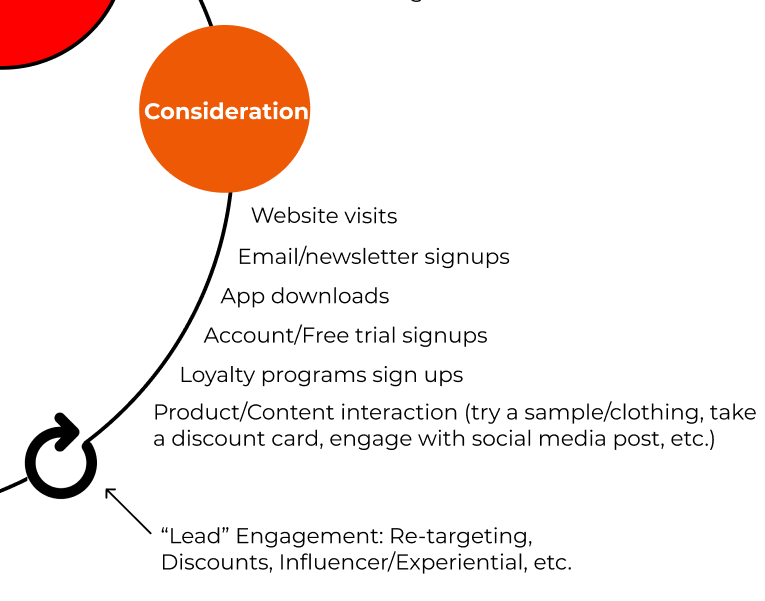
The Critical Moment, Purchase + Retention
A part of the Gen Z consideration stage that is often overlooked by companies is the potential customer’s critical moment. Here, the individual makes the decision to purchase a company’s product or service. Sometimes, this decision is propelled by a combination of incredible experiences and remembering reviews or promotional posts on social media. Other times, this decision arises when an explicit need materializes or simply when the individual starts earning disposable income. For middle to late adopters, maybe seeing a trend unfold is what causes the ultimate purchase.
Companies often do the wrong thing here by trying to force the purchase. The critical moment is mostly out of the company’s control – the potential customer has to experience it themselves. The company just needs to communicate their brand messaging and execute proper campaigns as discussed in the previous sections. The memory will persist even if the critical moment occurs years after the first point of contact – just be there and available when the critical moment is experienced. Gen Z likes to be coaxed, not coerced into spending decisions.
Oftentimes, this “critical moment” event requires great self-awareness from a company. For example, if a company is selling a $500 product, one cannot expect a Gen Z customer, who happens to be a college student, to purchase it on a whim when they don’t have a job. But, upon receiving the first full time job paired with a need that arises, the company’s product will be the first to come to mind and subsequently translate to a first time purchase. It is here that all that awareness/engagement and re-engagement campaigns pay off.
In terms of what the actual “purchase” looks like, the actions come in various forms depending once again on the companies, as outlined on the diagram below. The goal however is not a single purchase but instead a purchasing habit. What sets a one-time purchase apart from a purchasing habit is the economics and quality of the product/service, as well as the values that the company presents. The retention that results from positive brand experiences and repeated purchases leads to advocacy, the phase key to keep the growth engine growing.

Advocacy
The defining quality about Gen Z is how many people they are connected to. Personal network size is a concept that addresses how many people the average person knows. The advent of social media has increased this number drastically, and since younger people tend to use social media, they have access to more people than their older counterparts. Constant communication means that stories about a product are shared to more potential people – and at quick rates. Word of mouth is real and alive.
Though it often takes a long time between first contact and purchase, once Gen Z becomes advocates, it’s a self-fulfilling cycle with each customer organically introducing more and more potential buyers to initiate their own customer lifecycle with the company. They essentially become natural marketers for the company.
This advocacy phenomenon creates a sort of compounding effect and virality that is so desired by marketers. It takes patience and a longer time period to show a return on investment (ROI), but this is where it all pays off at the end. However, as powerful as Gen Z advocacy can be, it can also be a double edged sword. If a company receives a bad reputation, it will not take long for the opposite effect to take place. Hence, a company’s product/services, brand message, and reputation should always be held in check and in high regard.

Consumer Insights
It is highly unlikely that the first iteration of a Gen Z strategy achieves the maximum output for a company. Generally, multiple iterations need to occur to arrive at the right formula. By leading focus groups, sending out surveys, and conducting interviews, companies need to engage Gen Z individuals to learn more about what’s working and what’s not. Gaining such insight allows a company to optimize every step of the customer lifecycle including the product/service fit, the brand messaging, as well as the advertising mediums/campaigns.
Conclusions drawn from such consumer insights allow a company to improve internal processes, which in effect, accelerates the customer lifecycle journey. For example, if a company learns that 89% of the audience found a social post from the company more engaging than an email when they were considering a purchase, the company can optimize that part of the cycle by focusing all their efforts on social instead of spreading themselves too thin. With the compounding that takes place at the last leg of the journey, even small optimizations along the way can lead to a big overall impact.
Technology and Media
It is no secret that Gen Z are digital natives. They were raised in the age of technology and social media. They have a few go-to platforms (Instagram, YouTube, and TikTok being top 3), but continue to use more diverse methods of accessing the world around them. No doubt this online space is valuable for marketers, but they should be a little skeptical to “go all in.” Gen Z values privacy. 45% worry about their personal information getting compromised (SheerID). They also know how to manipulate their digital footprint to protect it. This includes using ad blockers, setting social media accounts to private (⅔ of Gen Z reports changing privacy settings on social channels), and closely scrutinizing the accounts they follow. There is a real risk that the marketing message might not get acknowledged or even seen.
Social media and online marketing is still important. Not only is this where Gen Z lives, it also tends to be less resource-intensive than physical engagement and allows for a greater quantity of contacts. However, not all online initiatives are equal. As seen in the image below (data from HerCampus), consumers prefer “recommendations from a friend or someone they know on social media” over a “TikTok or Instagram ad”. Even “posts from an influencer I follow on social media” rank firmly behind the more personal recommendation. This is a theme that has been discussed at length – Gen Z wants authentic messages that feel more tangible to them. They prefer realistic proposals to idealistic ones, preferably shared to them by “real people” they know. Gen Z’s skepticism of new information they receive online governs their purchasing habits and restricts the influence that digital marketing has on this demographic.
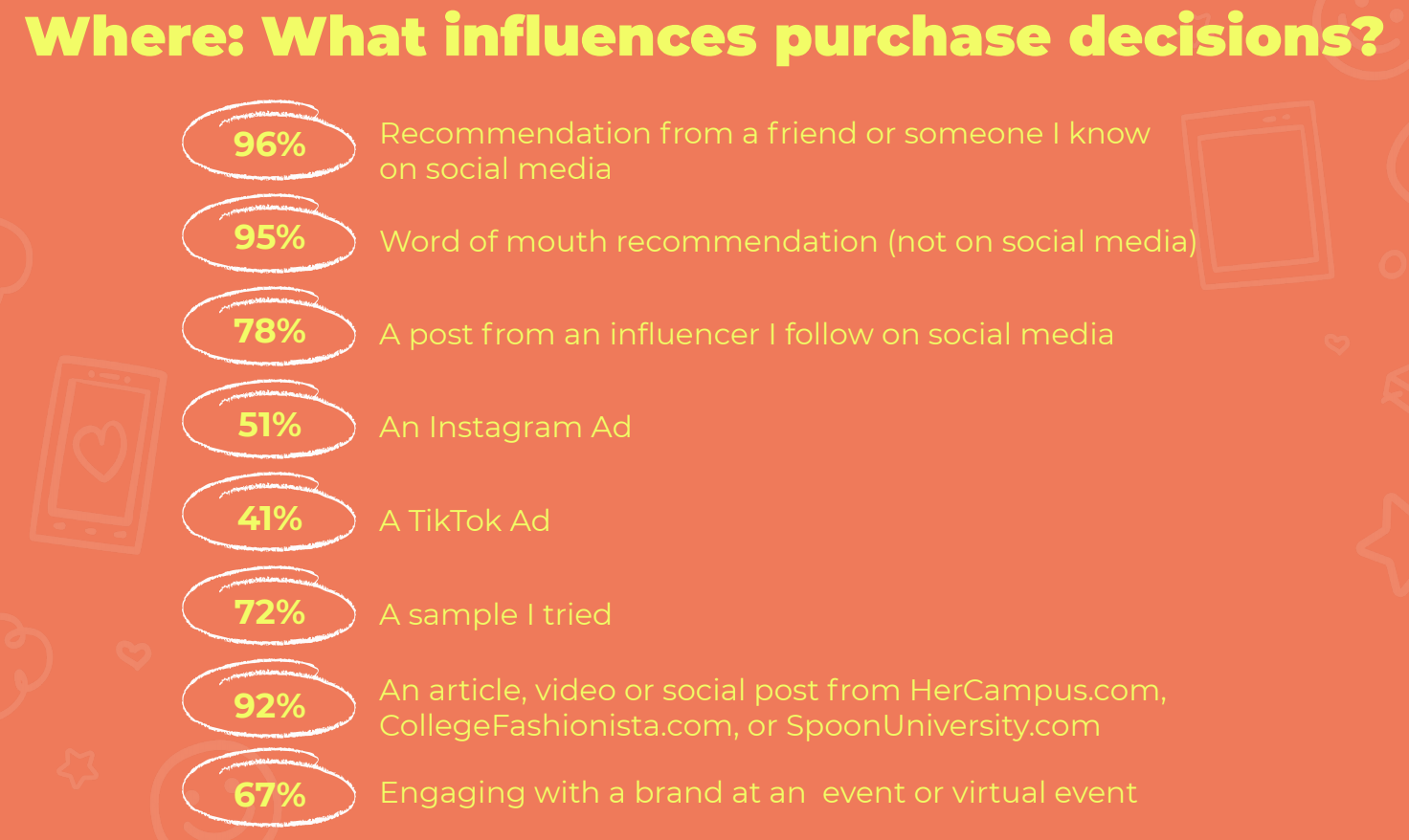
The Role of Brand Ambassadors
Brand Ambassadors can play a key role in any marketer’s Gen Z efforts. They can nurture and guide potential customers as they are going through their individual customer lifecycle, serving as the trusted “human” factor on behalf of the company. Their ability to use their own network allows them to permeate potential customer bases far deeper than conventional forms of marketing. As Gen Zers themselves, Brand Ambassadors know and speak the Gen Z language; hence, they can also present the company in a way that is intriguing for their peers.
A Brand Ambassador program, when done properly, can aid in the execution of every step of the Gen Z customer lifecycle.
Brand Ambassadors for Awareness + Engagement
A company’s first interaction with a potential Gen Z customer constitutes the awareness and engagement phase. At this stage, not only does the company need to execute engaging campaigns, but also get the messaging right and create the “we get you” factor that Gen Z customers are looking for. Brand Ambassadors can do both of these things.
Beginning with social influencer marketing, a Brand Ambassador can utilize their personal online accounts to spread an authentic message about the company they represent. The potential customers that the Ambassador is reaching already know the Ambassador on a personal level. Therefore, there’s a certain trust factor inherently ingrained. The potential customer is more likely to listen. This also bypasses any issues with privacy, since the audience has given the “Ambassador” permission to share content with them as part of being in their network.
Companies can also engage Brand Ambassadors to execute various in-person activations on college campuses. They can host a tabling event, engaging passer-bys to learn more about the company’s product or service. They can conduct a presentation about the company in a classroom or an organization meeting setting. They can distribute samples so potential customers can test the product and ask questions. They can distribute flyers along with certain discounts, leaving the potential customer with tangible items to remember the company by. Such activities cannot be done without having a physical presence where Gen Z lives. Ambassadors are a viable and cost-effective solution for this.
A well-executed Brand Ambassador program combines the online and offline activities outlined above to take advantage of the Rule of 7. A potential customer might see a social media post from the Ambassador, participate in an engaging tabling activation on campus hosted by the Ambassador, and receive a flyer to take back with them all within a span of a few weeks or even days. All touchpoints are executed by someone similar to them. Someone who talks and thinks like them. Someone they listen to since the message is based on personal perspective.
Brand Ambassadors for Consideration + Purchase + Retention
A potential customer enters the consideration phase when they have taken a step towards learning more about the company or trying a product or service. At this stage, it’s paramount for the company to nurture the interested “lead.” Due to close physical proximity, Gen Z are always conversing, sharing their interests, and reforming what is considered “trendy”. Ambassadors can capitalize on this on behalf of the company and continue having authentic conversations with the interested “leads”. They can share additional discounts and use-cases, either personally or as part of larger efforts aimed at showcasing the company. They can ask and answer any questions on behalf of the company that the potential customers might not get answered on their own.
A big step in the consideration stage is the critical moment. Unfortunately for companies, there is very little they can do to trigger this event in their potential customer. Ambassadors, however, are totally in sync with what’s going on. They are also a part of Gen Z, meaning they coexist with other members of the same age group. They understand the consumer’s sticking points and can help their peers reach the critical moment by guiding them to it.
Not always does the consideration phase have to be a long, drawn out process. Brand Ambassadors can also set a company up for immediate conversion. According to Refuel Agency, 28% of students who talked with Brand Ambassadors (often student peers), not only researched the product, but purchased it immediately (Refuel Agency).
Once purchased, Brand Ambassadors can continue keeping tabs on the new customer. They can continue as the human element of the company. How are they liking the product or service? What else do they want? Their close proximity and ability to communicate with customers frequently and in person allow them to preserve engagement and propel them to build a purchasing habit with the product or service.
Brand Ambassadors for Advocacy + Consumer Insights
Ambassadors are normally advocates of the company they represent to begin with. They already naturally share the company with peers and bring new potential customers through the door. With a structured Ambassador program, they get compensated to directly participate in converting the new potential customers they refer into customers, and then advocates themselves.
However, it does not just end there. Ambassadors can also be successful in recruiting even more Brand Ambassadors for the company they represent. When conversing with a potential customer, Ambassadors are often asked about their role with their company. Gen Z values work experience. They want internships and jobs that provide them with the necessary skills to succeed post-graduation. A company that hires students has a positive branding effect, making the company more desirable. They are then more likely to purchase or even look to work as a Brand Ambassador with the company themselves, further accelerating the adoption of the company within the Gen Z market.
Companies gather insights to optimize every step of the customer lifecycle of their potential buyers. Brand Ambassadors are directly engaging with peers at all the various stages of the customer lifecycle – from someone who has never heard of a company, to someone who is an advocate of the product/service themselves. It makes sense to utilize the Ambassadors to gain insight – not only into what’s working and not working, but, at the end of the day, what potential customers actually want. Ambassadors can lead focus groups of potential customers. Oftentimes, however, simply interviewing the Ambassador provides a trove of actionable insights.
Conclusion
As Gen X and Millennials age and Gen Z approaches its peak share of consumption, businesses must pay attention and recognize the qualities that distinguish Gen Z from their older counterparts. As a result, marketing has to be re-thought, using a mixture of different online and offline strategies. Brand Ambassador programs are a good option, due to their ability to combine in-person and digital connections to engage audiences in an authentic and personalized way.
